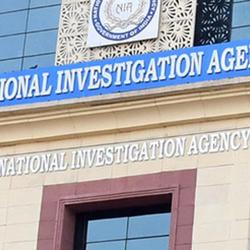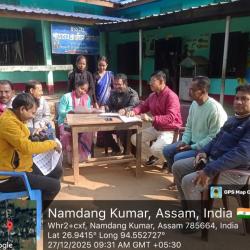KAZIRANGA: There has been a sharp rise in the number of incidents of human-leopard conflicts in Assam in the last few years that has taken a turn for the worse with a number of the species killed by mobs. Large-scale encroachment in forestland and in the hills that provided safe refuge for the leopard has forced the big cat to come into conflict with humans.
Last year alone, more than 20 leopards were killed and an equal number of the cats were captured by the forest department in different parts of the state. “Like all other species, the survival of the leopard is also under threat due to an expanding human population, and accompanying development and habitat fragmentation. On an average, there is an incident of either killing or capture of a leopard reported from different parts of the state every 10 days. It is important that these cats are not trapped as have been the norm with the forest department. Instead the need of the hour is to build local capacity for addressing the problem and to follow a policy of co-existence by ensuring safety of humans and survival of the spotted cat,” said Mubina Akhtar, secretary, Kaziranga Wildlife Society.
“Although leopards are found near human habitations, it was found that they avoid people. They are superbly made to live anywhere, surviving even on rats and frogs and also scavenge. As such, successful educational campaigns are primary goals to reduce conflicts and address the issue. With this objective the Kaziranga Wildlife Society has kicked off a campaign to save the big cats particularly the leopard—the most vulnerable at the moment and to build capacity at the, she added. The campaign started at Nora Gaon, near Bogorijeng in Golaghat on March 3 on the occasion of World Wildlife Day. World Wildlife Day was proclaimed to celebrate and raise awareness of the world's wild animals and plants and this year’s theme is 'Big Cats'. Using the expanded definition of big cats, this year’s theme proposed to raise awareness on the conservation of the tiger, lion, leopard and jaguar, as well as the cheetah, snow leopard, puma, clouded leopard and related species.
Kaziranga Wildlife Society members interacted with locals of Nora gaon which has become an epicenter of conflict of this kind in Golaghat district. The year 2016 saw five leopards caged and translocated from that area. Lifting of cattle and poultry at regular intervals by the sly cat has decreased the tolerance level of the villagers.
“While anti-depredation units are there in each wildlife division their functioning has been marred by manpower and logistics constraints. The problem persists. On the other hand, the response system needs to be better-equipped to deal with the growing incidence of straying wildlife. There was a suggestion for a toll free number so that such incidents could be reported to proper authorities and help could be at hand. Unfortunately, the Forest Department tries to pass the buck to BSNL and thus the urgency needed to redress the issue has long been ignored, said Akhtar.
In the meeting villagers vent their grievances against the authorities for not being able to compensate their loss. Nitya Gohain, a community member, said that they had submitted lists of the loss they suffered with the forest department over the years but there has been no response.
To manage human–wildlife conflicts, it is important to change the perceptions of people experiencing the damage with adequate economic incentives as compensatory measures, so that they are ready and willing to tolerate damage.
Kaziranga Wildlife Society (KWS) president Padum Borthakur, who chaired the meeting, said that it is important to empower local communities with the knowledge and field equipment for conflict prevention. The KWS also plans to develop an advisory system to for public understanding of protection, conservation and legal measures, he added. Brochures with do’s and don’ts in the event of a conflict were distributed among the community members. KWS members Alok Sarma, Chandan Gogoi, Ronjit Dohutia and Anup Sarma were also present on the occasion. Students and teachers of Marsneil Academy, Golaghat also participated in the programme.
- 8054 reads










Add new comment